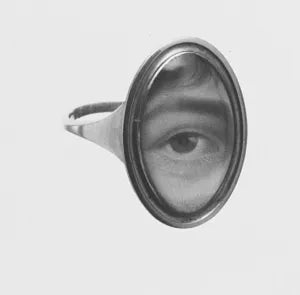By modern standards, miniature art constitutes a piece that is no bigger than 10 x 10 inches. However, miniatures can get so small that they are only viewable with a microscope. In 2013, the smallest ever painting was achieved by reimagining the Mona Lisa at 30 microns wide. Dubbed the Mini Lisa, the Georgia Institute of Technology recreated this piece to be smaller than human hair.
While art has never existed on such a small scale before in history, humans have focused their artistic expression on small scales since ancient civilizations.
The first time the word miniature was used to describe art was in 1586 by Sir Philip Sidney, used to describe the reflections in bubbles of women playing in the water. However, such a method of painting existed back in Rome from Lala of Cyzicus, who focused on etching miniature works on top of ivory in the 4th century.
Earlier in history, tiny art did not exist simply on canvas. In fact, such art was used to adorn illuminated manuscripts of the 16th century. These small illustrations typically decorated the borders of texts from the Roman Catholic Church. Most of these pieces were created on parchment or a specific kind of prepared animal skin called “vellum.” The writing was added first, but there was space deliberately left on the page for these illustrations to be included later by hand.
Many of those ugly pictures of cats from the Medieval era came from these manuscripts. For example, MS. Rawl. C. 328 at Bodley Library at Oxford University is from the 14th century. There are plenty of other instances of such odd drawings in manuscripts, but their size helped capture such a hunting scene on the page along with their text.

The detail in such small works is incredible, but recent psychological studies suggest that the size alone plays a significant factor in our fascination with small pieces of art. Studies show that when people view miniature art, the portions of our brain that activate are similar to when we see young animals. “Seeing something small and cute stimulates bonding behaviors and the need to take care of it and protect it," licensed professional counselor from Neurofeedback & Counseling Center Amanda Levison told Real Simple. In addition, small objects are commonly associated with one’s childhood, eliciting a nostalgic response. This is especially the case for miniature art that alludes to childhood stories.
Claude Lévi-Strauss suggests in The Savage Mind that we derive satisfaction from minuscule objects because we can see and comprehend them in their entirety. In art, this can be a similar approach: if an artist wants their work to be perceived in its entirety while still leaving room for the smallest of details, people viewing it from a distance can still perceive the work in its entirety but can get as close as possible to appreciate the tiniest of details. The scale of a work impacts how someone studies a work, not just how someone understands it.

One fascinating phenomenon is when a miniature world of art fills a life-sized space. Tatiana Bilbao’s Estudio did just this in a recent installation at the SFMOMA titled “Architecture from Outside In.” Through a small-scale architectural lens, Mexico City-based artist Tatiana Bilbao works to explore humankind's current-day context. As the SFMOMA’s website states, “Visitors are invited to consider how advocacy, city planning, architecture, and development shape society. The drawings, collage, and models on view represent built and unbuilt projects, and are shown together in a large-scale, hand-drawn landscape covering the gallery walls.” Bilbao pulls together architecture, city planning, and climate justice in a small-scale way. In doing this, Bilbao’s play in scale pulls visitors in, inviting them to take a closer look at the various relevant topics this installation explores.
Miniature art continues to fascinate the masses of the artists’ refined technique, patience, and niche. From a psychological standpoint, the scale of the works activates portions of our brain similar to when we look at small animals—tiny art is as beautiful as it is adorable. From an anthropological standpoint, humans could be enamored by such an art genre due to its perceivability; you don’t have to step back to see the whole picture. The scale makes the works appear to be more tangible to all audiences. Within a more present context, Tatiana Bilbao uses miniature scales to implore viewers to consider the complexities of the development of society, inviting conversation on its many layers. Even still, as technology improves and changes the art world, art will only continue to get smaller, extending the capabilities of human creativity beyond the standard paintbrush and into microscopes.

©ArtRKL™️ LLC 2021-2023. All rights reserved. This material may not be published, broadcast, rewritten or redistributed. ArtRKL™️ and its underscore design indicate trademarks of ArtRKL™️ LLC and its subsidiaries.





